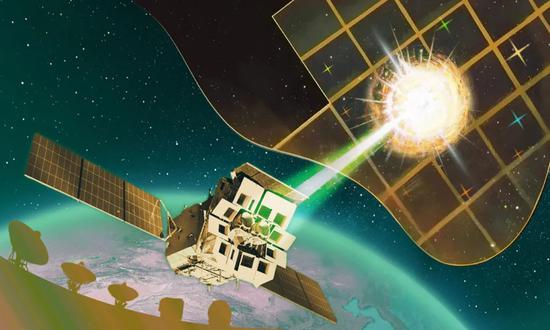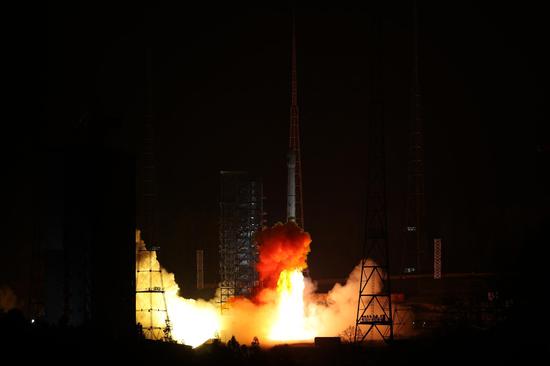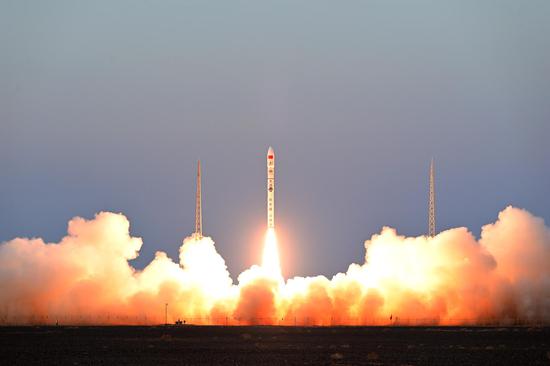
Artistic rendering of the Einstein Probe (EP) astronomical satellite, also known as the Tianguan satellite. (Photo/Courtesy of the National Astronomical Observatories of the Chinese Academy of Sciences)
China has detected a gamma-ray burst, designated as EP240315a, that originated approximately 12.5 billion light years away using its Einstein Probe (EP) astronomical satellite, also known as the Tianguan satellite, the Xinhua News Agency reported on Saturday. This is the first instance of humanity detecting soft X-ray signals from an early universe explosion, opening a new window for research into the young cosmos.
The relevant research paper has been published online in the international academic journal Nature Astronomy on Thursday, Xinhua said.
There are numerous violent explosive events in the universe. Such events occur randomly and vanish swiftly, resembling fleeting cosmic "fireworks." Observing these cosmic "fireworks" is of great significance for researching frontier issues in fields such as black holes, gravitational waves, and cosmic evolution, the report said.
"Gamma-ray bursts rank among the universe's most violent explosions, usually generated by the explosion of massive stars," said Liu Yuan, a research fellow at the National Astronomical Observatories of the Chinese Academy of Sciences (CAS). On March 15, 2024, the EP satellite first captured the weak pulse signal of EP240315a in the soft X-ray band. The brightness of EP240315a fluctuated rapidly and gradually disappeared after more than 17 minutes.
Subsequently, multiple astronomical telescopes around the world observed EP240315a in succession. The research results show that it originated in the distant early universe. At the time, the universe was just 10 percent of its current age, and it took 12.5 billion years for the signal of EP240315a to reach the Earth, read the Xinhua report.
"Compared with other gamma-ray bursts, EP240315a stands out as unique," commented Wu Xuefeng, one of the corresponding authors of the paper and a research fellow at the Purple Mountain Observatory of CAS. For example, the X-ray brightness of EP240315a is relatively dim at the peak of the burst, and the time gap between X-rays and gamma-rays for EP240315a is significantly longer than other bursts. These characteristics will prompt the scientific community to re-examine the generation mechanism of gamma-ray bursts, Wu said.
Many experts at home and abroad said that the observation results of EP240315a by the EP satellite have deepened humanity's understanding of early universe gamma-ray bursts, offer fresh insights into the origins and evolution of the universe, Xinhua reported.
The EP mission is one of a series of space science missions led by CAS. This is an international collaboration effort, featuring contributions from the European Space Agency (ESA), the Max Planck Institute for Extraterrestrial Physics (MPE) in Germany, and the French space agency CNES.
Launched into space in January 2024, the satellite has achieved several initial discoveries, such as an uncommon transient phenomenon, advancing understanding of the universe and extreme physical phenomena, Xinhua reported.
It aims to help scientists detect the first light from supernova explosions, search for and pinpoint X-ray signals accompanying gravitational wave events, while identifying dormant black holes and other faint, transient celestial objects.


















































 京公网安备 11010202009201号
京公网安备 11010202009201号